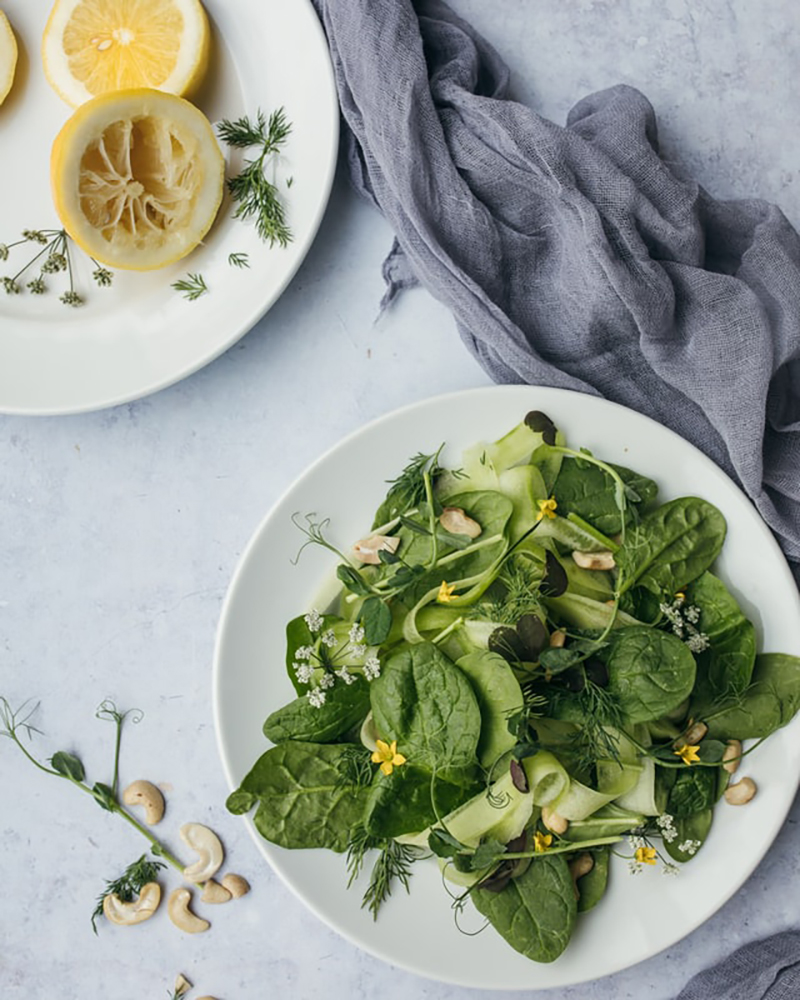


Every year the Environmental Working Group (EWG) analyzes the most recent USDA data to compile its infamous Dirty Dozen and Clean Fifteen list. If you’ve been a long-time reader then you’re pretty familiar with these. But before you start scrolling, please stop and listen to this public service announcement. Whether you buy organic or conventional, do not take these lists as a sign to stop eating fruits and vegetables altogether, especially the ones being considered as “dirty.” With research like this study from the Illinois Institute of Technology, Chicago, found that after seeing pesticide messaging, low-income shoppers were less likely to purchase any fruits or vegetables. Eating non-organic fruits and vegetables is without a doubt, a much healthier option than eating none at all. Buying organic is a privilege, so use these lists as a mere guideline to help direct your produce purchasing habits from a pesticide perspective.
By now, you might be wondering, how does the EWG come up with this list? Simply put, the EWG went through the data of 46,075 samples of 46 of the most popular fruits and vegetables. They then assign it a score based on the percent of samples tested with detectable pesticides. The list indicates which crops are being treated with the highest volume and variety of pesticides. The EWG reports , “Nearly 70 percent of the non-organic fresh produce sold in the U.S. contains residues of potentially harmful chemical pesticide.”
Dirty Dozen (2021 Edition):
The main difference between this and last year’s list is the addition of bell and hot peppers. It was noted in the EWG report, “After being tested for the first time since 2012 and 2011, bell peppers and hot peppers are also included in this year’s list in the 10th spot.” Furthermore, the USDA found 115 types of pesticides on peppers in this year’s testing round. Including chlorpyrifos, and acephate, which can be potentially harmful in large doses.
1. Strawberries
2. Spinach
3. Kale, Collard, and Mustard Greens
4. Nectarines
5. Apples
6. Grapes
7. Cherries
8. Peaches
9. Pears
10. Bell + Hot Peppers
11. Celery
12. Tomatoes
Clean Fifteen (2021 Edition):
For the most part, the “cleanest” produce has a tough outer exterior that is removed prior to eating, which helps mitigate some pesticide risk.
1. Avocados
2. Sweet Corn
3. Pineapple
4. Onions
5. Papaya
6. Sweet Peas (Frozen)
7. Eggplant
8. Asparagus
9. Broccoli
10. Cabbage
11. Kiwi
12. Cauliflower
13. Mushrooms
14. Honeydew Melon
15. Cantaloupe
Read up on how this year compares to the lists from 2020 and 2019.
Related Stories:
The EWG’s Dirty Dozen & Clean Fifteen Update for 2020
The EWG’s Dirty Dozen & Clean Fifteen Update for 2019
These Freeze Tips Can Help Save You Money On Your Next Grocery Run
毎年、環境ワーキンググループ(EWG)は、最新のUSDAデータを分析して、悪名高いDirty Dozen and CleanFifteenリストを作成しています。あなたが長年の読者であるなら、あなたはこれらにかなり精通しています。ただし、スクロールを開始する前に聞いてください。オーガニックまたは従来のどちらを購入する場合でも、これらのリストを果物や野菜、特に「汚れた」と見なされているものを完全に食べるのをやめる基準にしないでください。シカゴのイリノイ工科大学によるこの調査では、農薬のメッセージを見た後、低所得の買い物客が果物や野菜を購入する可能性は低かった。非有機の果物や野菜を食べることは間違いなく、まったく食べないよりもはるかに健康的な選択肢です。有機食品の購入は特権であるため、これらのリストを単なるガイドラインとして使用して、農薬の観点から農産物の購入習慣を指示するのに役立ててください。
今では、EWGはどのようにしてこのリストを作成するのか疑問に思われるかもしれません。 簡単に言えば、EWGは、最も人気のある46の果物と野菜の46,075サンプルのデータを調べました。 次に、検出可能な農薬でテストされたサンプルの割合に基づいてスコアを割り当てます。 このリストは、どの作物が最も多くの種類の農薬で処理されているかを示しています。 EWGの報告で、「米国で販売されている非有機生鮮食品の約70%には、潜在的に有害な化学農薬の残留物が含まれています。」
ダーティダース(2021年版):
これと昨年のリストの主な違いは、ピーマンと唐辛子の追加です。 EWGの報告書には、「2012年と2011年以来初めてテストされた後、ピーマンと唐辛子も今年のリストの10位に含まれています」と記されています。 さらに、USDAは、今年のテストラウンドでピーマンに115種類の農薬を発見しました。 クロルピリホス、およびアセフェートを含みます。これらは、大量に投与すると潜在的に有害である可能性があります。
1.イチゴ
2.ほうれん草
3.ケール、コラード、マスタードグリーン
4.ネクタリン
5.リンゴ
6.ブドウ
7.さくらんぼ
8.桃
9.梨
10.ピーマン+唐辛子
11.セロリ
12.トマト
クリーンフィフティーン(2021年版):
ほとんどの場合、「最もクリーンな」農産物は、食べる前に取り除かれる丈夫な外面を持っており、農薬のリスクを軽減するのに役立ちます。
1.アボカド
2.スイートコーン
3.パイナップル
4.玉ねぎ
5.パパイヤ
6.スイートピース(冷凍)
7.ナス
8.アスパラガス
9.ブロッコリー
10.キャベツ
11.キウイ
12.カリフラワー
13.きのこ
14.ハニーデューメロン
15.マスクメロン
今年が2020年および2019年のリストとどのように比較されるかを読んでください。
関連記事:
The EWG’s Dirty Dozen & Clean Fifteen Update for 2020
The EWG’s Dirty Dozen & Clean Fifteen Update for 2019
These Freeze Tips Can Help Save You Money On Your Next Grocery Run